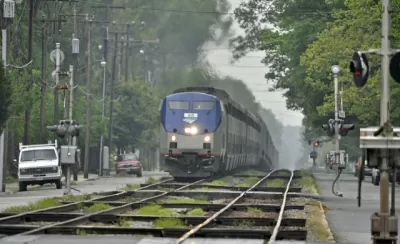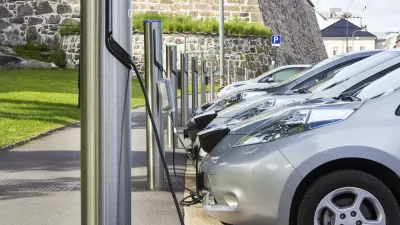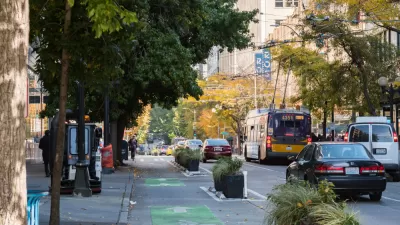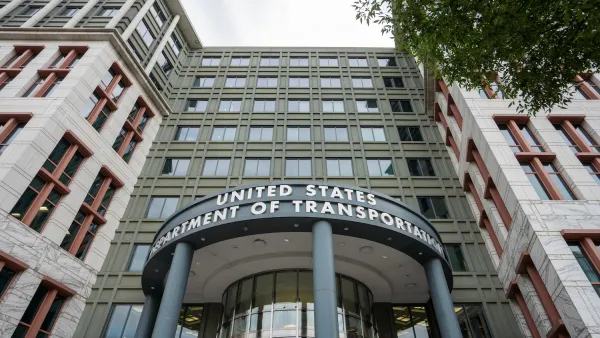The proposed bill keeps road funding almost intact while cutting funding for electrification, rail, and community development.

Despite the "historic" level of funding for transit included in the current infrastructure bill, Kea Wilson writes that the similarly "historic funding for drivers" undercuts any potential progress. According to Wilson, writing before the "Infrastructure Investment and Jobs Act" passed the Senate last week, "many sustainable transportation advocates were troubled by top-line funding ratios that would give transit a smaller percentage share of federal dollars than at any point since the Nixon administration, slash 95 percent of funding for a program that would reconnect BIPOC communities sundered by highways, and threw only crumbs to ending the accelerating roadway safety crisis."
Since the 1980s, "a handshake agreement in Washington has essentially guaranteed that drivers get 80 percent of federal infrastructure funding and transit agencies get 20 percent." Despite hopes that the new bill would tip the scale more towards transit, the current agreement does the opposite, "landing at roughly 82/18 — a slap in the face to advocates who hoped to see drivers split the pie 50/50, at the least." According to Renae Reynolds, executive director of the Tri-State Transportation Campaign, "it’s a suicide mission that prioritizes cars and highways over more equitable and sustainable forms of transportation."
Wilson writes that "[t[he transit category lost about 54 percent of proposed stimulus funding as it went through the partisan sausage-grinder; the 'roads' category, by contrast, lost about 8 percent." Meanwhile, funding for electrification programs has been slashed by 90 percent from the original proposal and "new roadway safety spending could easily be undercut by the continuation of bad roadway policy."
FULL STORY: Infrastructure Deal ‘Worst Ratio for Transit Funding Since Nixon’

Planetizen Federal Action Tracker
A weekly monitor of how Trump’s orders and actions are impacting planners and planning in America.

Map: Where Senate Republicans Want to Sell Your Public Lands
For public land advocates, the Senate Republicans’ proposal to sell millions of acres of public land in the West is “the biggest fight of their careers.”

Restaurant Patios Were a Pandemic Win — Why Were They so Hard to Keep?
Social distancing requirements and changes in travel patterns prompted cities to pilot new uses for street and sidewalk space. Then it got complicated.

Platform Pilsner: Vancouver Transit Agency Releases... a Beer?
TransLink will receive a portion of every sale of the four-pack.

Toronto Weighs Cheaper Transit, Parking Hikes for Major Events
Special event rates would take effect during large festivals, sports games and concerts to ‘discourage driving, manage congestion and free up space for transit.”

Berlin to Consider Car-Free Zone Larger Than Manhattan
The area bound by the 22-mile Ringbahn would still allow 12 uses of a private automobile per year per person, and several other exemptions.
Urban Design for Planners 1: Software Tools
This six-course series explores essential urban design concepts using open source software and equips planners with the tools they need to participate fully in the urban design process.
Planning for Universal Design
Learn the tools for implementing Universal Design in planning regulations.
Heyer Gruel & Associates PA
JM Goldson LLC
Custer County Colorado
City of Camden Redevelopment Agency
City of Astoria
Transportation Research & Education Center (TREC) at Portland State University
Camden Redevelopment Agency
City of Claremont
Municipality of Princeton (NJ)





























